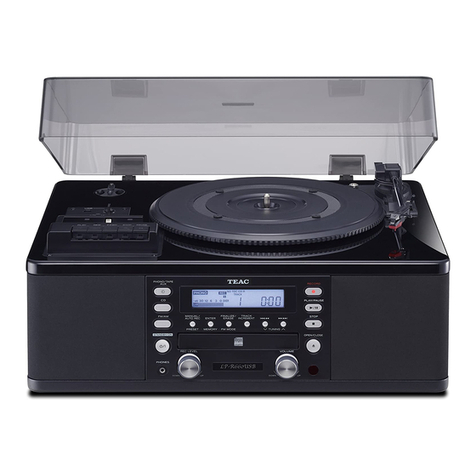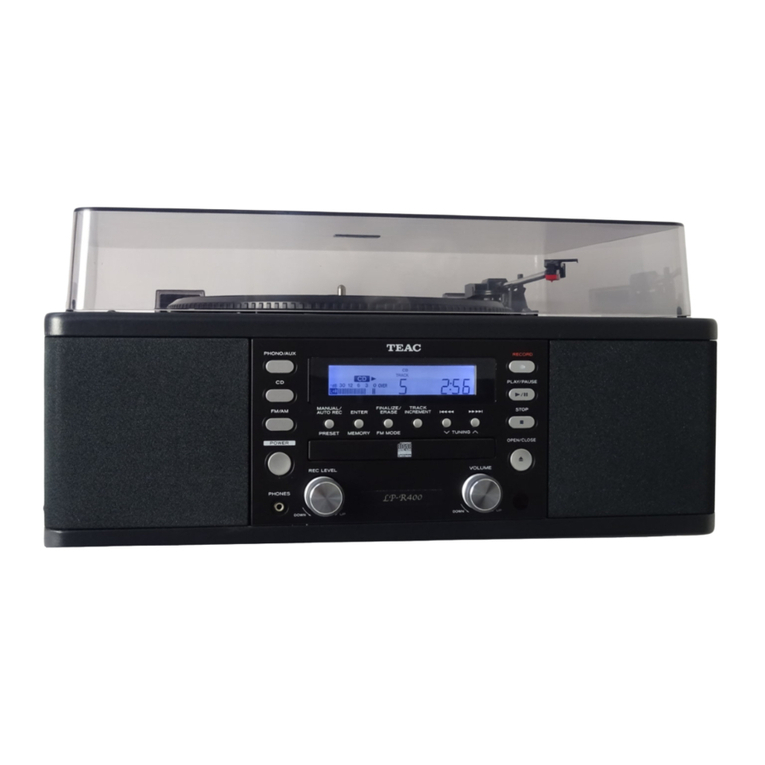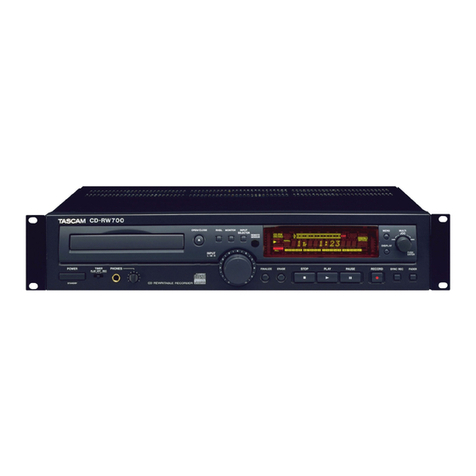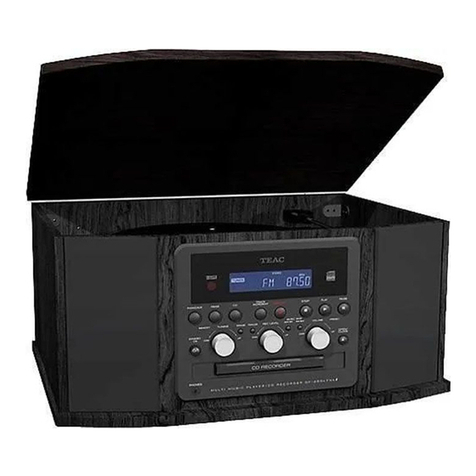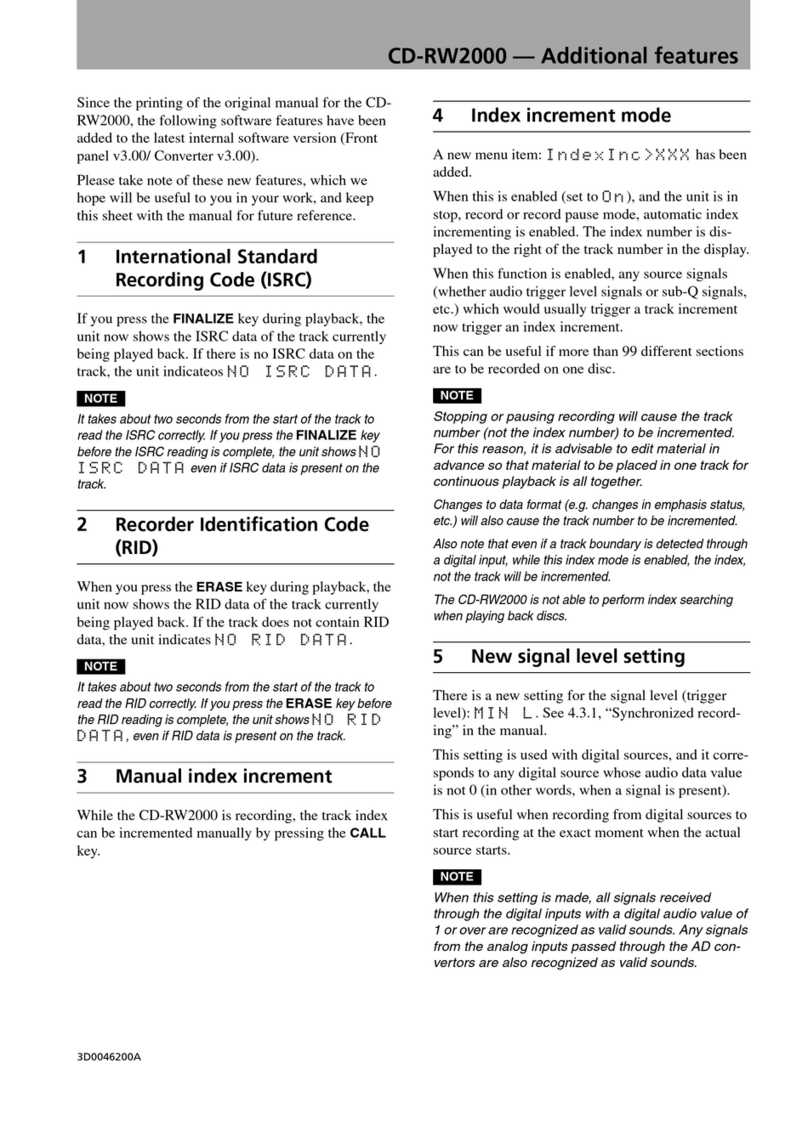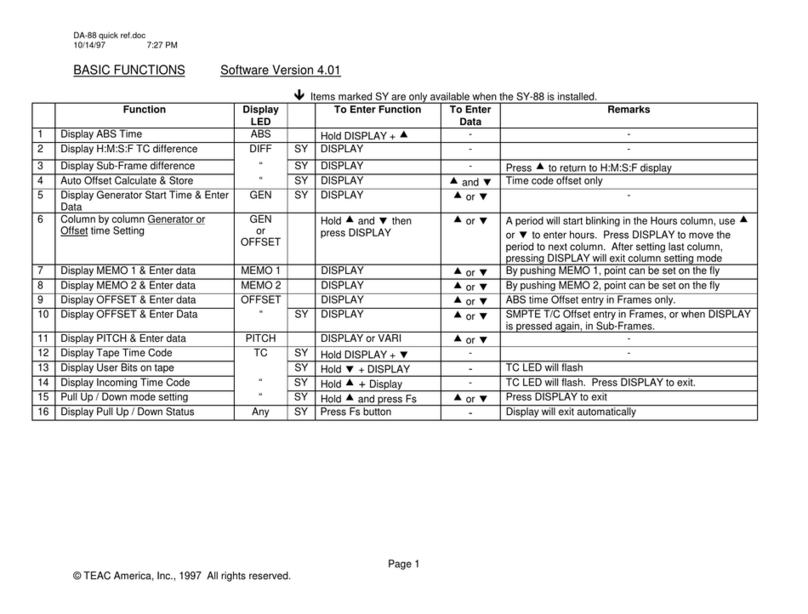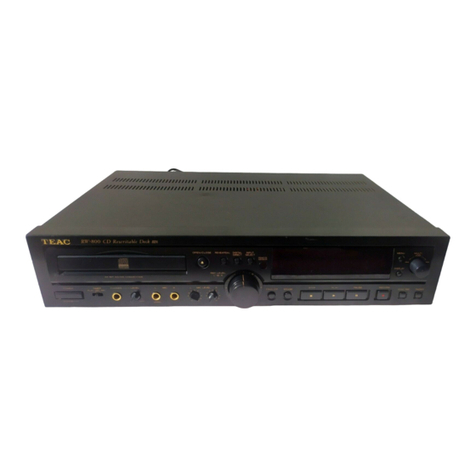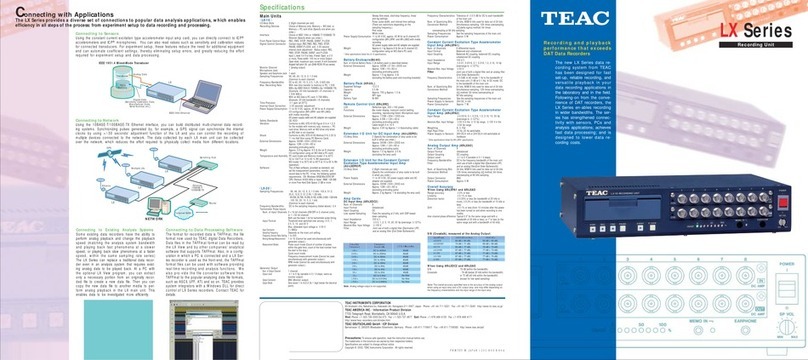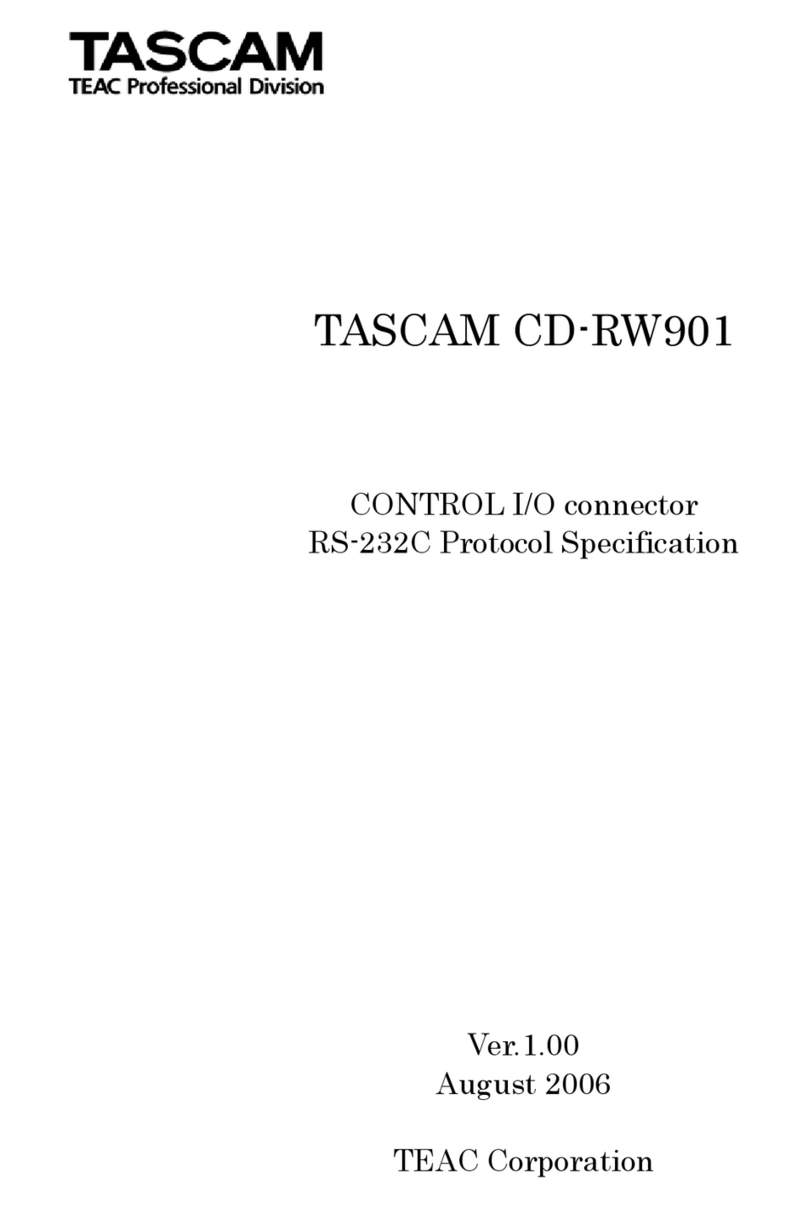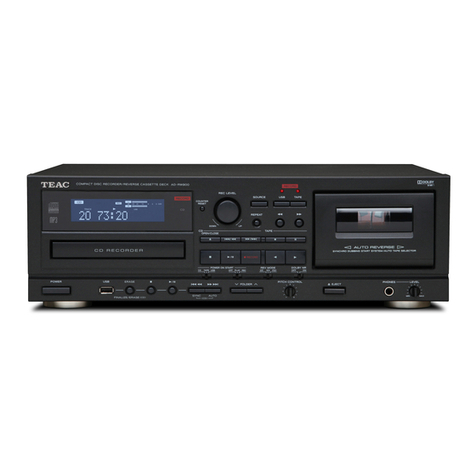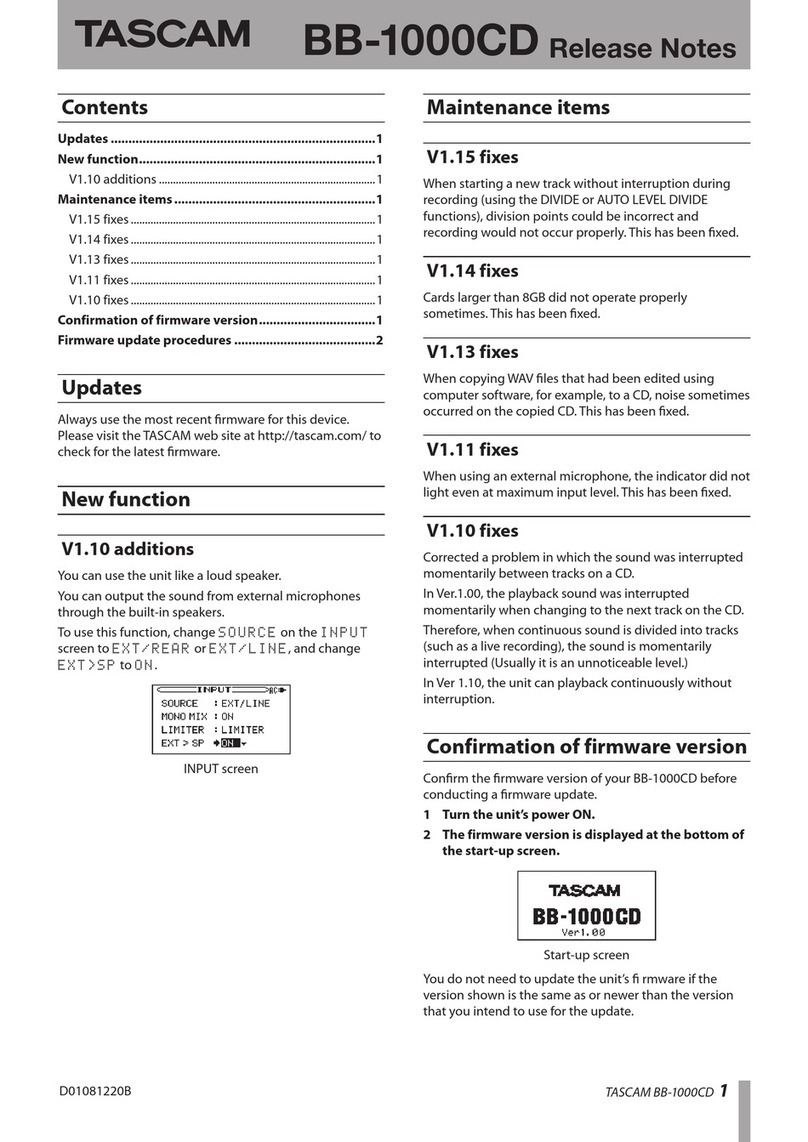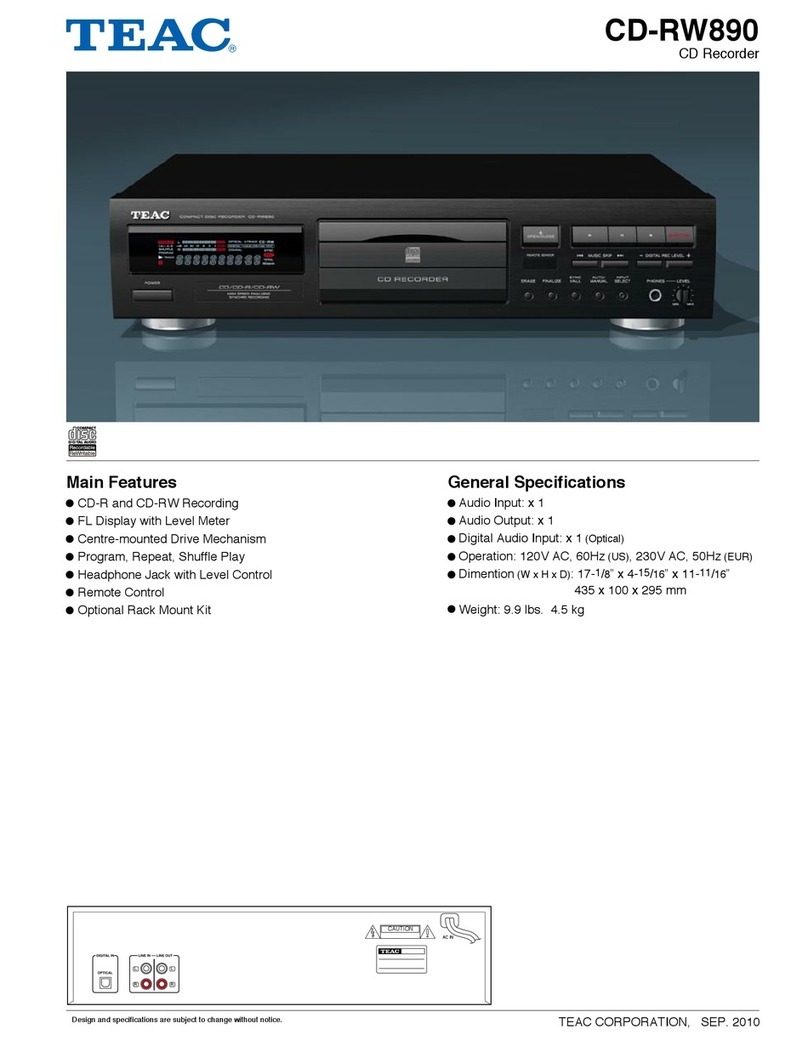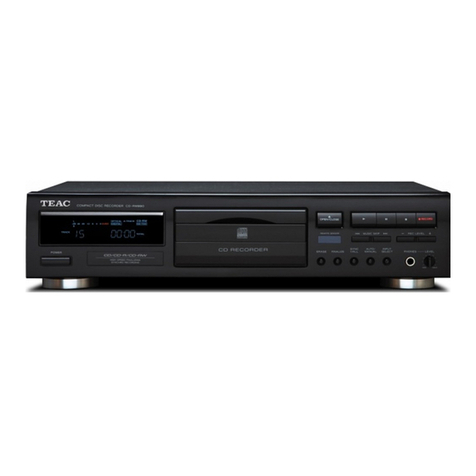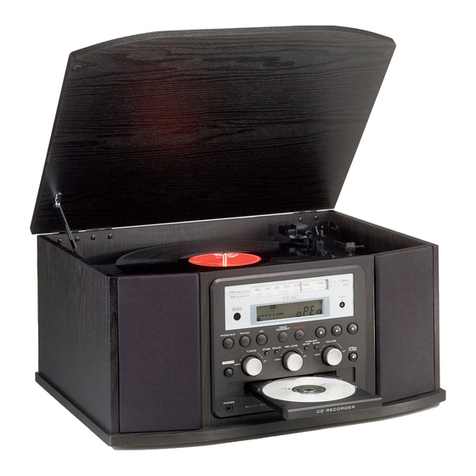
DS Series Instruction Manual 2006.12
Page 1
1. INTRODUCTION
The DS series disk recording system is a wideband hard disk recorder that has been de eloped to
record signals of higher frequency, multiple channels, and longer time.
There are two models based on their recording channels, 32 channels and 64 channels per unit.
For example, they can record for example 32 channels of 100 kHz bandwidth at 256 kHz sampling
signals for 2.5 hours continuously into the internal hard disk dri e.
Synchronization recording of multiple channels with multiple units is possible without sacrificing
the sampling rate per unit.
Recorded data can be transferred by using a Gigabit Ethernet interface (1000BASE-T) on the unit.
Simultaneous data transfer to PC ia network while recording data into the internal hard disk
dri e is possible depending on combinations of the recording channel and the sampling rate.
The DS unit can operate as a standalone recorder using front panel key controls to set record
conditions and to control recordings. It can also operate as a front end system controlled by PC.
In addition to 32/64 channels’ input models, TEAC recently introduced 32 channels’ input/output
model.
This manual is applicable to the following models:
DS-320R 32 channels’ input disk recording system
DS-640R 64 channels’ input disk recording system
DS-320RP 32 channels’ input/output disk recording/playback system
1.1 Overview
70 minutes of 16 channels 16 bits high resolution data at 1 MHz sampling.
Simultaneous sampling by using multiple A/D con erters per channel, selectable from 20
kHz to 1 MHz.
Continuous recording to the internal hard disk dri e at the maximum rate of 16M
words/sec.
Playback from the internal hard disk dri e at the maximum rate of 8M words/sec and the
maximum playback sampling frequency of 500 kHz.
Types of the input amplifier selectable from IEPE/TEDS or DC.
Endless recording by using the internal hard disk dri e as a ring buffer.
High speed data transfer o er network by using 1000BASE-T interface.
Monitor signal output of a specified channel.
Monitoring data o er network while recording to the internal hard disk dri e.
IEPE: Integrated Electronics Piezoelectric
1.2 Notes before Using
Check whether the deli ered product is exactly the one you ordered.
Although thorough quality control is implemented at TEAC, when you recei e the package, please
confirm that the deli ered product has exactly the same configuration as the one you ordered. If
there is any deficiency or if parts are missing, please contact TEAC promptly.
Accessories
AC Cable x 1
3P Adapter x 1
Earphone x 1
Microphone x 1
Instruction Manual x 1
Clamp filter for the I/O cable x 4 ※Refer to Page 4 for the installation.
Use the specified power supply.
Do not connect a power supply that is not specified for this product. Using a power supply that
does not meet the specifications may damage the product.
Use Uninterruptible Power Supply (UPS).
Although the unit equips the internal battery to protect recorded data by closing the data file from
accidental power failure. We recommend using an external UPS in parallel.
To remo e the plug from the unit
To remo e the AC cable from the unit, hold the unit with one hand, and pull the plug straight with
the other hand. Do not pull the cable.
To operate the unit after storing at no power state for a long time
It will take approximately 11 hours for the internal battery to become fully charged. During the
charging period, it is imperati e to keep the DS power on.
